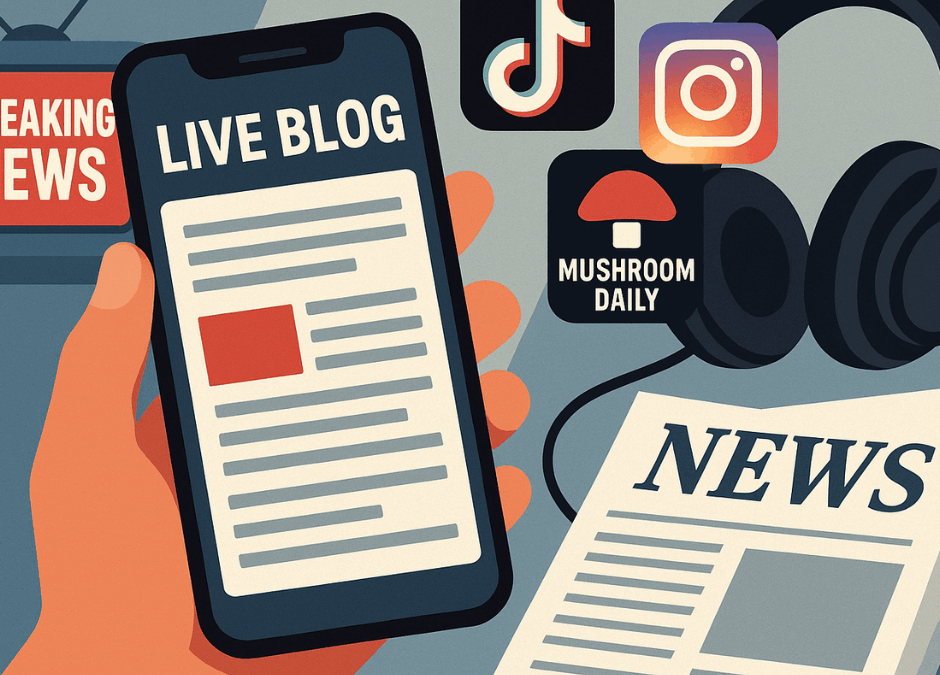The way we consume breaking news has transformed dramatically in the last 10, even 20 years. Recent events like the Erin Patterson trial are a prime example of this and show just how much our media consumption habits have changed. I don’t know about you, but every day I would catch up on the live blog of the trial on ABC, or listen to their Mushroom Daily podcast, whereas something as big as this, would once have only been reported on the 6pm news or be covered in the daily newspapers.
Today, news is delivered instantly across a wide ecosystem of formats, and as a communications professional, this really got me thinking, this shift isn’t just interesting, but something that is essential we understand how to adapt to.
When the Patterson trial began, major outlets launched dedicated live blogs updating developments almost minute-by-minute. True crime podcasts released bonus episodes to offer context and analysis. TikTok and Instagram Reels churned out bite-sized clips with legal explainers, commentary and theories. Meanwhile, some armchair experts and viral posts blurred the lines between fact, opinion and rumour.
This is the new rhythm of breaking news: not one story, but many formats. Not one outlet, but a swarm of voices and angles.
And it’s not just traditional journalists driving the narrative. Commentary, reaction and interpretation now often emerge from the crowd — and can go viral before the original facts have landed. It’s layered and noisy, but for many audiences, it’s more accessible and engaging than a static headline. There’s a reason this was the most talked about case among all demographics.
The way “big news” is delivered has also blurred the lines between reporting, commentary and speculation. A recent episode of Media Watch highlighted how even reputable outlets have fallen into the trap of amplifying unverified claims or sharing private details prematurely. In the rush to update, post, or be part of the story, the risk of error is ever-present — and once something is online, retractions rarely reach the same audience. (And yes, I did see this Media Watch report on TikTok – I am a living example of how news consumption has changed! You’ll often hear me say – “I saw that on TikTok”, or “I heard that on a podcast”).
So, what does all this mean for media watchers and comms professionals like us?
- News is no longer an endpoint — it’s a stream. Following a story often means dipping in and out of multiple channels, voices and formats throughout the day.
- Audiences expect immediacy and accessibility. People don’t wait — they want context, visuals, short-form summaries and commentary that meets them where they are.
- Credibility is in question. Traditional media no longer has a monopoly on trust. Creators, influencers and community pages can shape opinion just as powerfully — sometimes more so, even if they are in the wrong.
The Erin Patterson story is a real-life comms case study in how breaking news is shaped, consumed and shared in 2025. For those of us in media-adjacent industries, it’s a reminder that the news isn’t just faster now — it’s messier, more participatory and more constantly evolving than ever.
Alex Williams

